Webinar On-Demand: Shift the Paradigm to Centrifuge-less Immuno-staining of Cells for Superior Viability, Recovery & Data
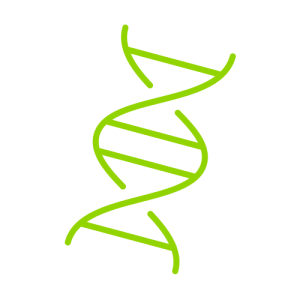
Laminar Wash technology gently washes cells, minimizing gene expression changes during sample prep.
Improve cell viability and reduce stress on cells; cleaner samples with fewer doublets and debris.
See examples of enhanced cell retention and reduced doublets.
Links to resources and publications.
Single-cell genomics and proteogenomics are rapidly growing. Nature Methods named multimodal omics the Method of the Year for 2019. As more scientists use single-cell techniques, they find that sample prep is paramount to producing high-quality data.
Cell clumping, poor retention of cells with already low cell counts, and unwashed residual nucleic acids are just a few symptoms of poor cell washing that impacts single-cell sequencing and proteogenomics. Centrifugation also induces cellular stress on samples, resulting in erroneous gene expression results.
Sample prep is extremely important in single-cell genomics and proteogenomics, especially for single-cell gene expression and immune profiling. While mRNA transcripts are being barcoded, cellular mRNA leakage (increased background) or mRNA degradation (decreased signal) significantly impacts these sensitive measurements. Unlike with flow cytometry, gating out debris or groups of cells is not possible in single-cell sequencing. The cell preparation must be as clean as possible and yield single cells.
10X Genomics’ Sample Preparation Demonstrated Protocol Fresh Frozen Human Peripheral Blood Mononuclear Cells for Single Cell RNA Sequencing (Part Number CG00039 Rev C) uses centrifugation to wash cells and warns, “However, be careful not to over-centrifuge as increased centrifugation speed can compromise the cell integrity and viability.” A study published in Nature Methods shows that single cell isolation procedures induce transcriptome-wide changes in cells. So, it makes sense that if there is a gentler method to wash cells scientists should use it.
Using the Laminar Wash system saves time with fewer manual manipulations. Gently washing cells without unnatural centrifugal forces maintains cell integrity and viability, while ensuring gene or protein expression changes are biological, instead of due to workflow.
Laminar Wash technology has been added as part of the official TotalSeq™ Protocol. It simplifies the processing of samples with low cell counts, enabling high-throughput.

TRADITIONAL
WORKFLOW
VS
LAMINAR FLOW
TECHNOLOGY
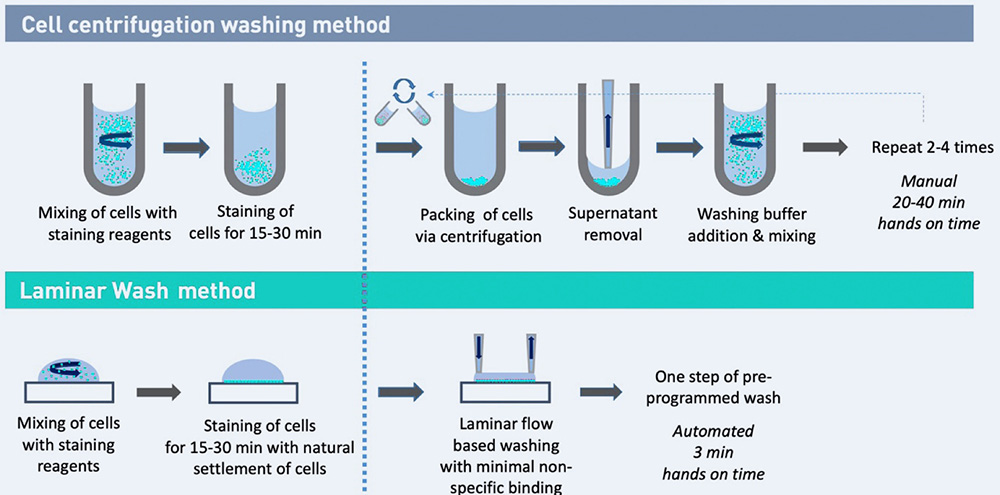
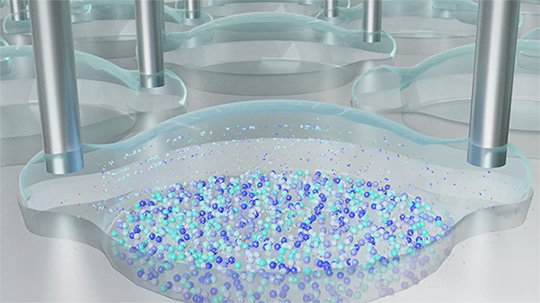
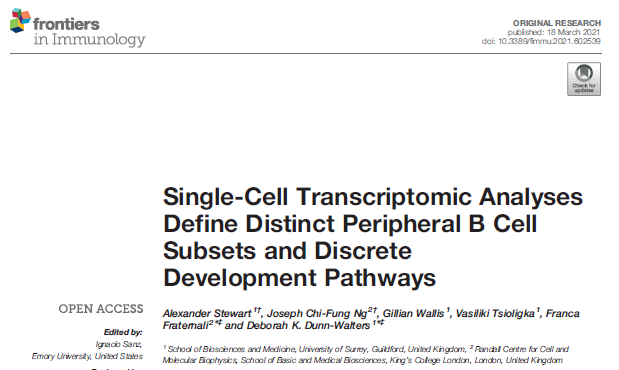
Figure 1: Laminar Wash generates better cell hashing results
Samples processed with a Curiox Laminar Wash system yield fewer doublets, fewer negative results and higher numbers of singlets. Data courtesy of ImmunAI, adapted from Dr. Antonio Montalbano’s webinar with Curiox Biosystems.
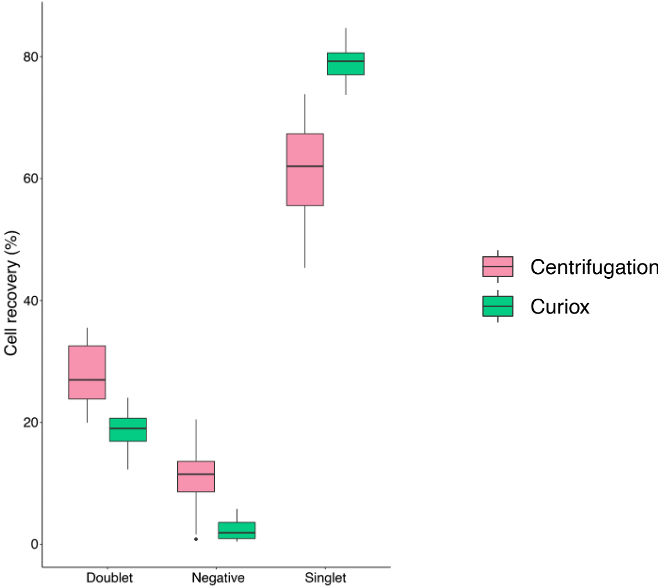

Figure 2: Laminar Wash Retains Higher Numbers of Cells.
Laminar Wash consistently retained higher numbers of cells, compared to traditional centrifuge-based methods. This is especially true for samples that have a very low number of cells. Data courtesy of ImmunAI, adapted from Dr. Antonio Montalbano’s webinar with Curiox Biosystems.